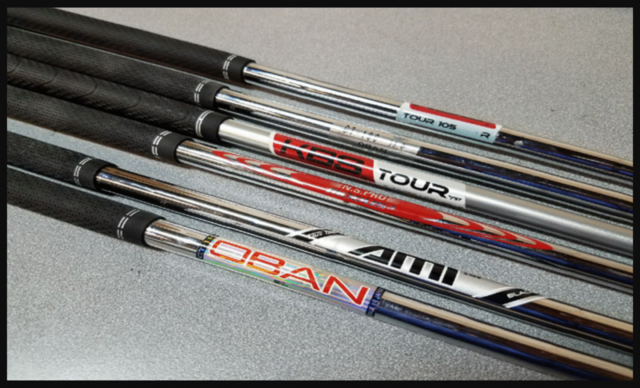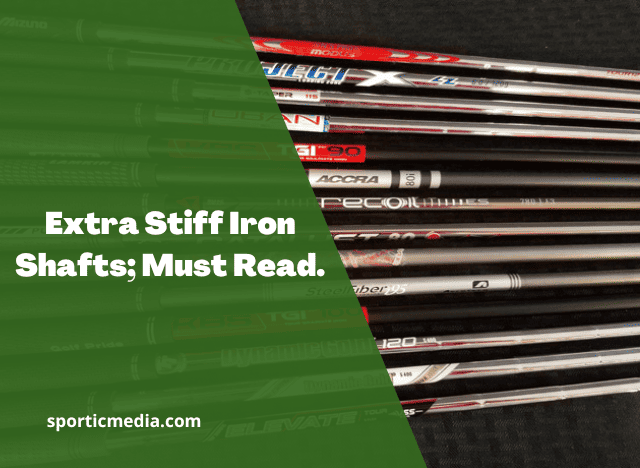When you’re shopping for golf clubs, one of the most important decisions you’ll face is choosing between Steel Shafts vs graphite shafts. This choice can significantly impact your game, affecting everything from how far you hit the ball to how much control you have over your shots. Don’t worry though – we’ll break down everything you need to know in simple terms.
What Are Steel and Graphite Shafts?
Think of the shaft as the backbone of your golf club. It’s the long part that connects the grip to the club head. Steel shafts are made from carbon steel or stainless steel, while graphite shafts are made from lightweight carbon fiber material.
The shaft you choose affects how the club feels in your hands, how fast you can swing it, and how accurate your shots will be. It’s not just about personal preference – the right shaft can actually help improve your game.
A quick analysis before we learn more
Steel vs Graphite Golf Shafts
Complete Performance Comparison
| Feature | Steel Shafts | Graphite Shafts |
|---|---|---|
| Weight Range | 90-120 grams | 50-85 grams |
| Control Level | Excellent | Good |
| Distance Potential | Standard | +5 yards per club |
| Flexibility | Low | High |
| Durability | Lifetime | Very Good |
| Vibration Dampening | Low | Excellent |
| Cost | Lower | 20% Higher |
| Best For | Control & Accuracy | Distance & Comfort |
| Ideal Swing Speed | Normal to Fast | Slow to Moderate |
| Feel | Firm Feedback | Smooth & Soft |
The Key Differences

Weight: Heavy vs Light
The most obvious difference between steel and graphite shafts is weight. Steel shafts typically weigh between 90 and 120 grams, while graphite shafts are much lighter at 50 to 85 grams. This might not sound like a big difference, but when you’re swinging a club, every gram matters.
The heavier steel shafts provide more stability and control, while the lighter graphite shafts allow you to swing faster and potentially hit the ball farther.

Flexibility: Stiff vs Bendy
Steel shafts are stiffer and don’t bend as much during your swing. This gives you more control but requires more strength to get the most out of them. Graphite shafts are more flexible, which can help generate more power if you have a slower swing speed.
Feel: Solid vs Smooth
When you hit a ball with a steel shaft, you’ll feel more vibration through your hands. Some golfers love this feedback because it tells them exactly how well they hit the ball. Graphite shafts absorb more of these vibrations, creating a smoother, softer feel that’s easier on your hands and arms.
Steel Shafts: The Control Masters
Advantages of Steel Shafts
Better Control and Accuracy: Steel shafts give you more precise control over where the ball goes. If you’re working on improving your consistency, steel shafts can help you hit more accurate shots.
Great Feedback: The vibrations you feel through steel shafts tell you immediately whether you hit the ball well or poorly. This feedback helps you learn and improve your swing.
Built to Last: Steel shafts are incredibly durable. With proper care, they can last a lifetime, making them a great long-term investment.
Budget-Friendly: Steel shafts cost less than graphite shafts, making them an excellent choice if you’re watching your budget.
Disadvantages of Steel Shafts
Harder to Swing: The extra weight means you might not swing as fast, which could cost you some distance.
More Vibration: If you have joint problems in your hands, wrists, or arms, the vibrations from steel shafts might be uncomfortable.
Less Forgiving: Steel shafts won’t help hide mistakes in your swing as much as graphite shafts will.
Graphite Shafts: The Distance Makers
Advantages of Graphite Shafts
More Distance: The lighter weight helps you swing faster, which usually means the ball goes farther – often at least 5 yards more per club.
Easier on Your Body: Graphite shafts absorb vibrations better, making them more comfortable if you have hand, wrist, or arm issues.
Great for Slower Swings: If you don’t generate a lot of swing speed naturally, graphite shafts can help you get more power and distance.
Smoother Feel: Many golfers prefer the softer, smoother sensation of hitting with graphite shafts.
Disadvantages of Graphite Shafts
More Expensive: Graphite shafts typically cost about 20% more than steel shafts.
Less Control: The extra flexibility can make it harder to control exactly where the ball goes.
May Highlight Swing Problems: If you have issues with your swing technique, graphite shafts might make these problems more noticeable.
Which Shaft Should You Choose?
Steel Shafts Are Great For:
- Golfers with normal to fast swing speeds who want maximum control
- Players who like to feel exactly what’s happening during their swing
- Anyone looking for a durable, long-lasting option
- Budget-conscious golfers who want quality without breaking the bank
- Golfers who prioritize accuracy over distance
Graphite Shafts Are Perfect For:
- Golfers with slower swing speeds who need help generating power
- Players with joint problems or those who find steel shafts uncomfortable
- Senior golfers who want to maintain distance as they age
- Anyone who wants maximum distance from their clubs
- Golfers who prefer a softer, smoother feel
What are the other factors to look for?
Your Swing Speed
Your swing speed is crucial in making this decision. If you can swing fast and generate good power naturally, steel shafts will give you the control you need without sacrificing much distance. But if you struggle to generate clubhead speed, graphite shafts can help you hit the ball farther and make the game more enjoyable.
Most golf shops can measure your swing speed to help you make the right choice. Don’t guess – get measured!
Mixing and Matching
Here’s something many golfers don’t realize: you don’t have to choose all steel or all graphite. Many players use graphite shafts in their driver and fairway woods for maximum distance, then switch to steel shafts in their irons for better control on approach shots.
This combination approach lets you get the best of both worlds – distance when you need it and control when precision matters most.
Making Your Final Decision
The best way to choose between steel and graphite shafts is to try both. Visit a golf shop where you can hit balls with different shaft types and see how they feel. Pay attention to:
- How comfortable the club feels in your hands
- How far the ball goes with each type
- How accurately you can hit your target
- Which shaft gives you more confidence
Remember, there’s no “wrong” choice here. Both steel and graphite shafts can help you play better golf – it’s all about finding what works best for your game and preferences.
The Bottom Line
Choosing between steel and graphite shafts doesn’t have to be overwhelming. Steel shafts offer control, accuracy, and durability at a lower price. Graphite shafts provide distance, comfort, and forgiveness for a bit more money.
Consider your swing speed, physical comfort, budget, and what you want to improve in your game. Most importantly, try both types before making your decision. The right shaft can make golf more enjoyable and help you play your best game yet.
Also read;
Best 44.5 Golf Shaft for What Height Man? Explained
How Long to Dry Golf Grips? Complete Guide By Sportic Media
Discover the meticulous and expert-driven process behind our product reviews at Sportic Media. Our comprehensive guide, led by industry veterans, ensures you get the most reliable and detailed insights into golf equipment. Dive into our methodical approach by visiting How We Test Products at Sportic Media: A Comprehensive Guide
.




